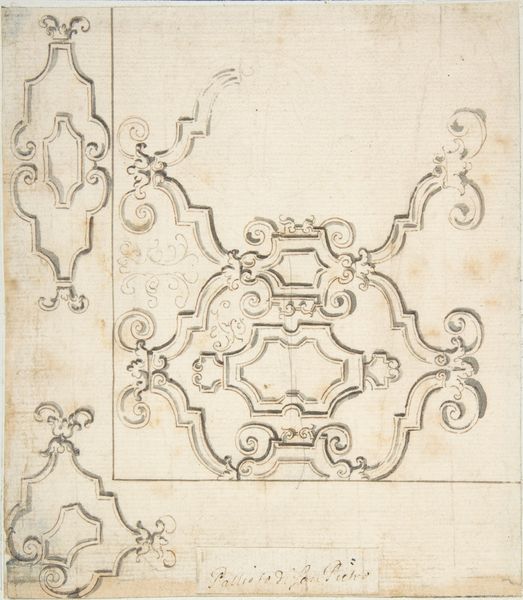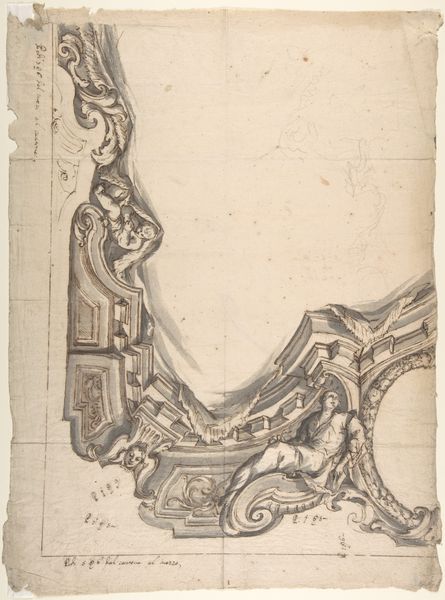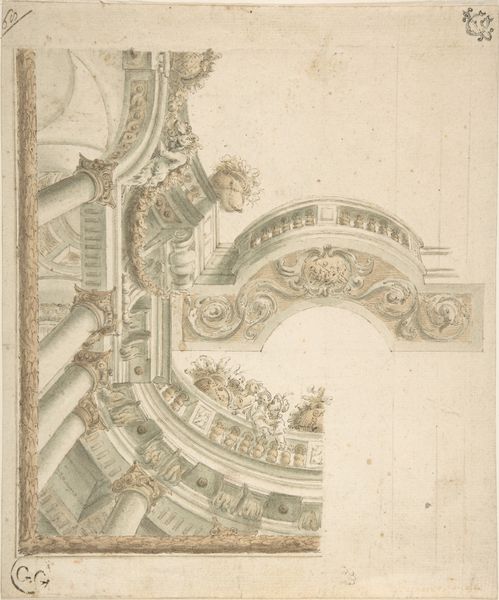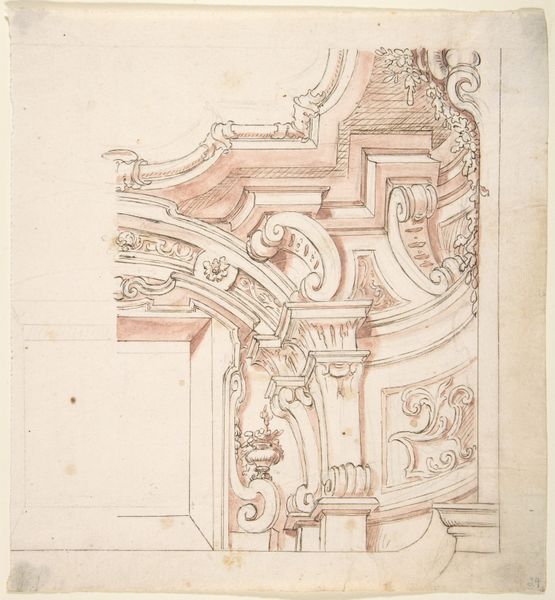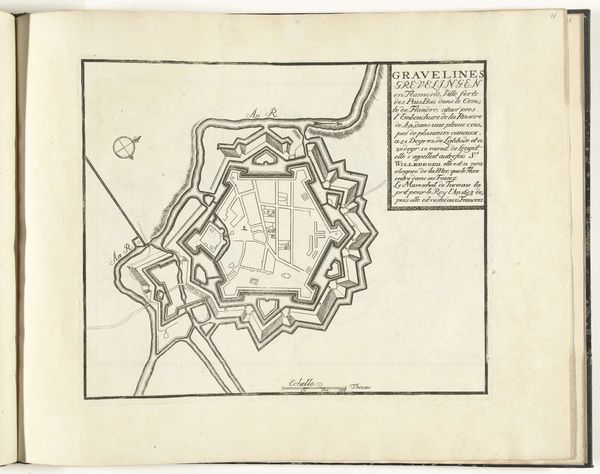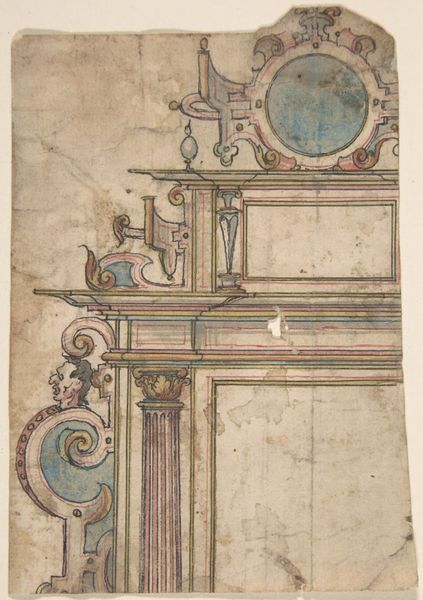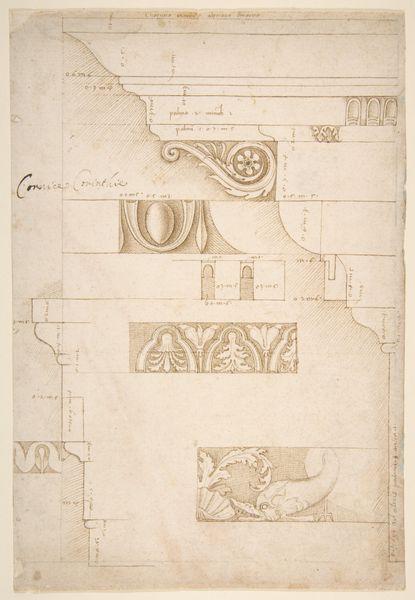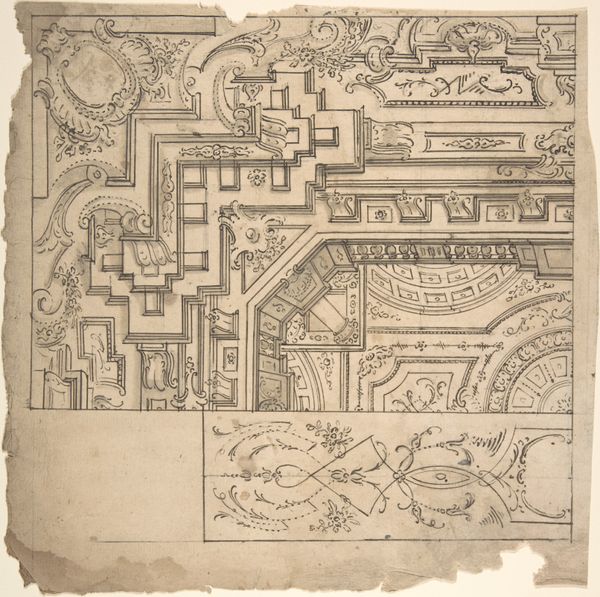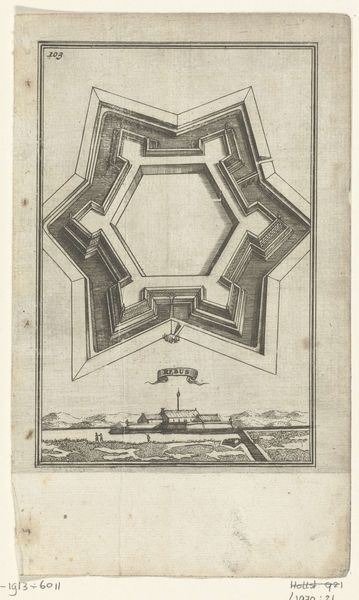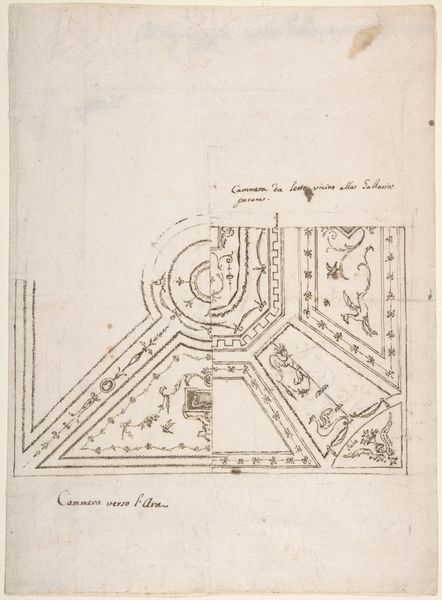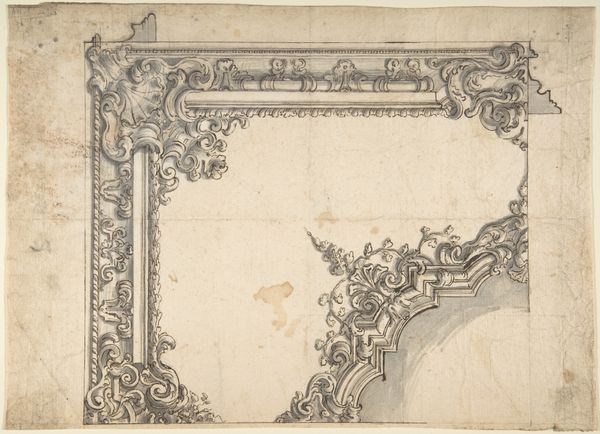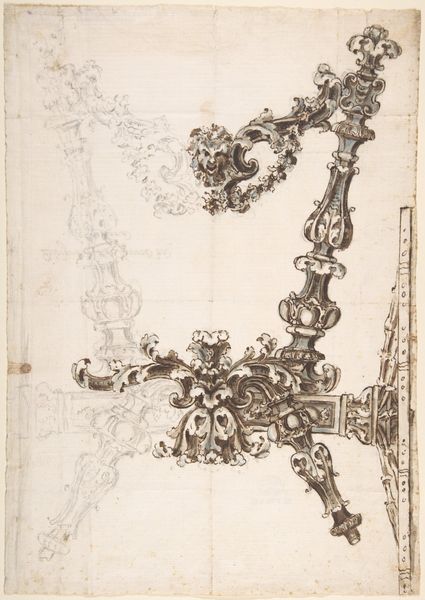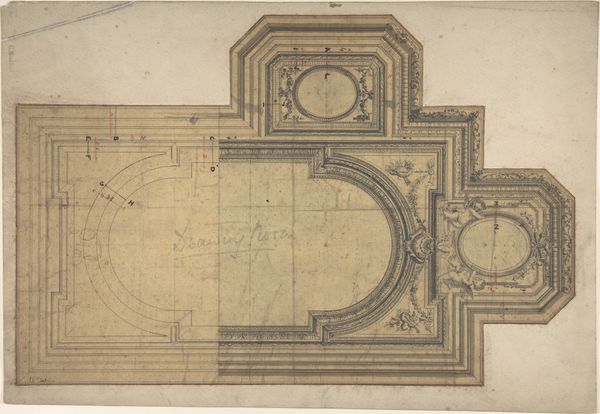
drawing, print, paper, watercolor
#
drawing
#
baroque
# print
#
paper
#
watercolor
#
watercolour illustration
#
history-painting
Dimensions: 11 11/16 x 8 1/16 in. (29.7 x 20.4 cm)
Copyright: Public Domain
Curator: This drawing, rendered in watercolor, depicts "Two Alternate Designs for a Frame." It dates from somewhere between 1700 and 1780. Editor: Immediately, I am struck by the ornamentation, a baroque exuberance conveyed through elegant, swirling lines and what appears to be meticulous symmetry. It promises, or rather demands, the same of whatever image is held inside. Curator: It’s fascinating to consider these frames not just as aesthetic objects, but as reflections of power and social standing in the late Baroque period. These elaborate designs would have signified wealth and influence; they’re statements of privilege made manifest in decorative form. How might the commissioning of such frames have impacted artistic patronage and social mobility at the time? Editor: Indeed. I'm drawn to the interplay between the graphic quality of the drawn line and the fluidity achieved by the watercolor washes. There's such precise articulation of each volute and curve, then the way light is seemingly captured with such ephemeral brushwork—it breathes life into what might otherwise be a static design. Do you see hints of the Rococo style beginning to emerge here? Curator: Absolutely. As a design for a frame, its very purpose is to direct how viewers would read an image—which images were prioritized for this sort of opulent treatment? Likely, we would be thinking about royal portraits or historical allegories, images of immense significance, reinforcing hierarchical social narratives through aesthetic grandeur. It also hints at global exchange—certain design elements speak to the influence of patterns and aesthetics coming out of China, through trade routes, reflecting an increasingly interconnected world. Editor: Looking at the empty center, one can't help but engage with the potential images that could inhabit it, as you suggest. The materiality suggests these were studies; almost ideas trying to find their purpose in the perfect application and context. Curator: Considering that, it almost humanizes the creator, seeing this design as an echo of both opportunity and restriction – the artistic drive finding its boundaries within an inequitable and complex societal framework. Editor: It leaves us pondering, doesn't it, on what we choose to frame, what we value. Curator: Indeed; power, wealth, the beginnings of a broader cultural exchange; and how they are shaped by aesthetics.
Comments
No comments
Be the first to comment and join the conversation on the ultimate creative platform.
